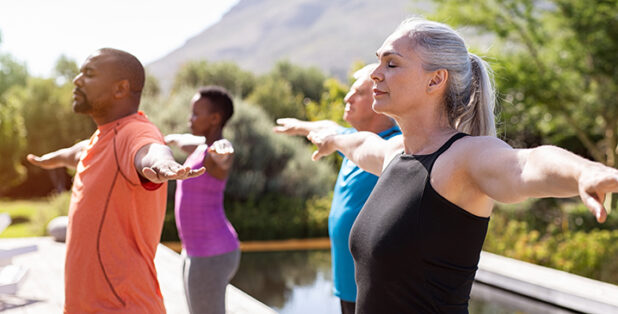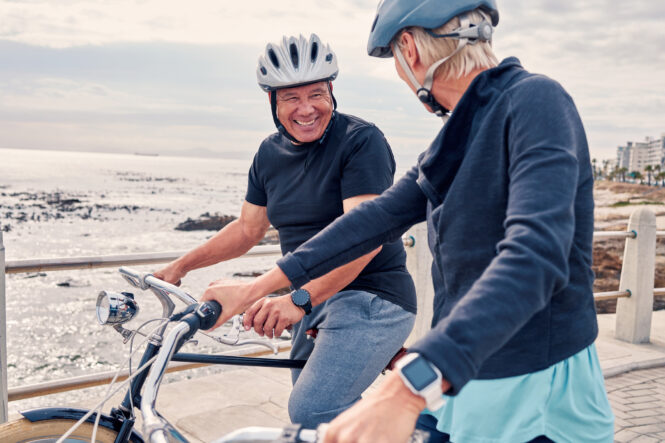Exercise is beneficial for everyone, but it can be especially helpful if you’re living with joint pain or arthritis. Routine exercise strengthens the muscles that support your joints and can also help you shed pounds if that is your goal. Stronger muscles and a reduced body mass mean less stress and wear and tear on the joints, which can help ease symptoms or prevent your condition from worsening. Moving your body can also help increase range of motion and flexibility, improve sleep and mood, and give you more energy – not to mention the cardiovascular benefits!
If you’re one of the millions of people impacted by joint pain or arthritis, it’s critical to be careful when approaching exercise. Here are some best practices to ensure that your routine doesn’t result in injury or exacerbate your pain.
- Consult with an expert. It’s always a good idea to talk to a health professional before starting a new exercise regimen. A physical therapist will be able to suggest exercises tailored to your arthritis symptoms and check your form.
- Choose your shoes carefully. There’s no one-size-fits-all sneaker suggestion for arthritis but looking for supportive shoes with extra cushioning is a good place to start. Do your research: read online reviews of different brands, shop at an athletic shoe store or one that specializes in shoes for people with health issues and consult with your physician or physical therapist.
- Low impact is the name of the game. Consider walking, hiking, swimming, water aerobics or cycling. Seek out exercise classes in your community designed for people with arthritis.
- Timing is everything. If your schedule is flexible, exercise during the time of day when your symptoms are the least bothersome. For people who wake up stiff, start your day with some gentle stretching and save the exercise for later.
- Start slowly and gradually increase session intensity and length. If you are not already active, 10-15 minutes of low-key daily exercise may be sufficient to start. Allow your body to adjust before upping the time and intensity. Don’t forget to exercise at a reasonable pace – you should be breathing a little harder than usual, but should still be able to carry on a conversation.
- Warm joints up with heat, calm them down with ice. Use warm towels, hot packs, or a shower before you exercise to relax joints and muscles. If your joints are painful after you exercise, ice them for about 20 minutes.
- Mix it up. Add a couple days of strength training exercises to your aerobic routine. Strengthening exercises include lifting weights, working with resistance bands and yoga.
- Listen to your body. You may feel some muscle soreness, stiffness, and even mild pain after starting a new exercise regimen. This should eventually subside. But if you experience sharp and constant pain, you’ve pushed yourself too hard. Reduce the intensity and duration during your next session or switch to a different type of exercise if the pain persists. Consult your physician if you experience significant joint swelling and/or pain that isn’t relieved by cold or hot packs, rest, and medication.
- Don’t forget to stretch. Experts now think the best time to stretch is after you exercise because you’ve increased the temperature of your muscles’ collagen fibers. They’re an important component of the muscles, and when warmed, they’re more elastic and responsive to stretching. Avoid static stretching, which is when you stretch and hold the position for a period of time. Instead, perform dynamic stretches which mimic the movements used in a sport or activity. For example, ankle circles stretch your ankle joints and prepare you for walking or hiking.
Exercising when your joints are achy may seem counterintuitive. But remember, inactivity will exacerbate your arthritis. Start modestly, increase the length and intensity of your activity incrementally, and before you know it, you’ll be reaping the many benefits of exercise. Your joints will thank you.




